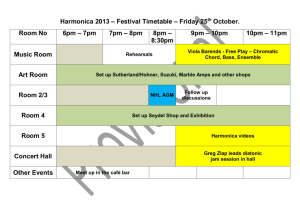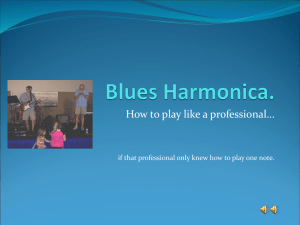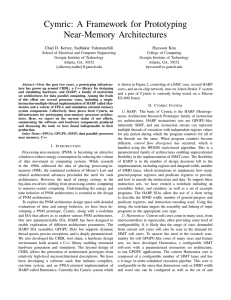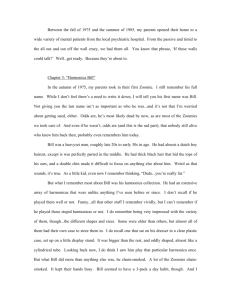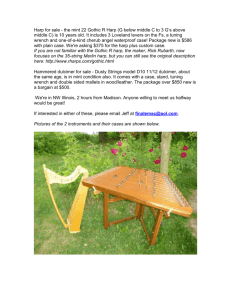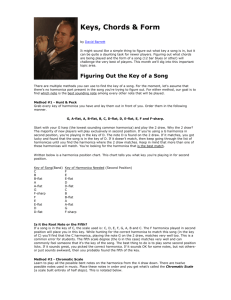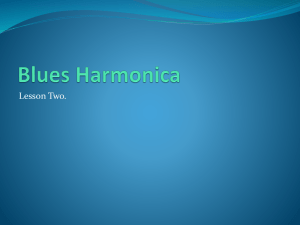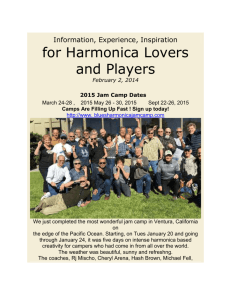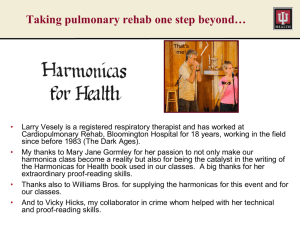Lesson 2 Styles, Keys, Layout of Harmonica
advertisement
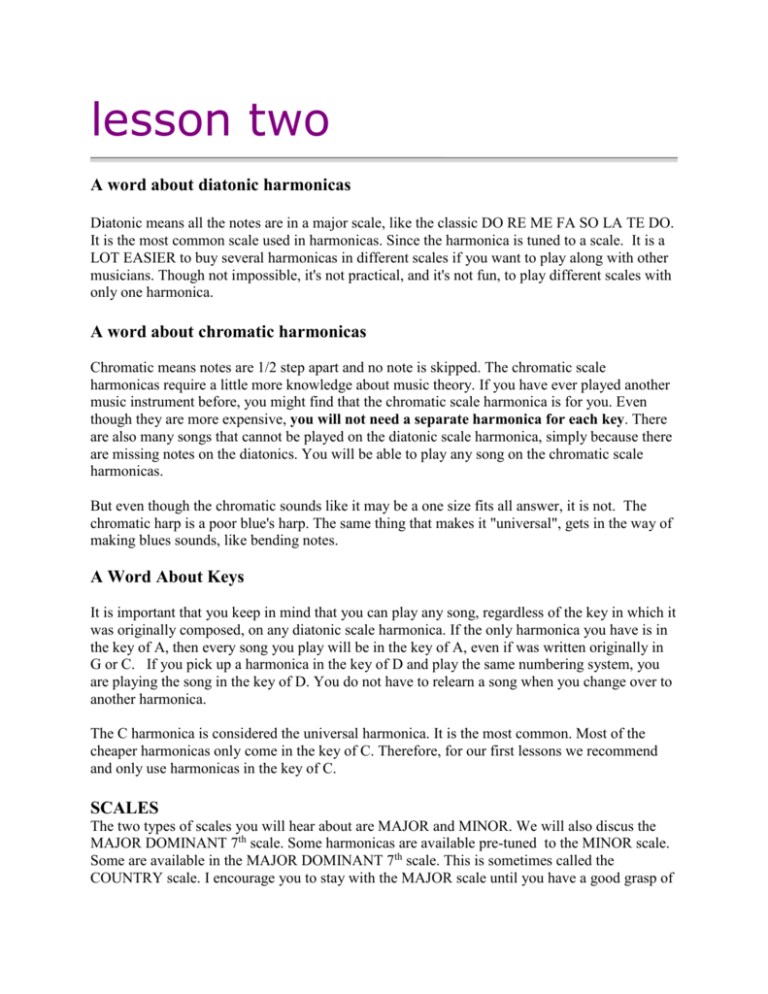
lesson two A word about diatonic harmonicas Diatonic means all the notes are in a major scale, like the classic DO RE ME FA SO LA TE DO. It is the most common scale used in harmonicas. Since the harmonica is tuned to a scale. It is a LOT EASIER to buy several harmonicas in different scales if you want to play along with other musicians. Though not impossible, it's not practical, and it's not fun, to play different scales with only one harmonica. A word about chromatic harmonicas Chromatic means notes are 1/2 step apart and no note is skipped. The chromatic scale harmonicas require a little more knowledge about music theory. If you have ever played another music instrument before, you might find that the chromatic scale harmonica is for you. Even though they are more expensive, you will not need a separate harmonica for each key. There are also many songs that cannot be played on the diatonic scale harmonica, simply because there are missing notes on the diatonics. You will be able to play any song on the chromatic scale harmonicas. But even though the chromatic sounds like it may be a one size fits all answer, it is not. The chromatic harp is a poor blue's harp. The same thing that makes it "universal", gets in the way of making blues sounds, like bending notes. A Word About Keys It is important that you keep in mind that you can play any song, regardless of the key in which it was originally composed, on any diatonic scale harmonica. If the only harmonica you have is in the key of A, then every song you play will be in the key of A, even if was written originally in G or C. If you pick up a harmonica in the key of D and play the same numbering system, you are playing the song in the key of D. You do not have to relearn a song when you change over to another harmonica. The C harmonica is considered the universal harmonica. It is the most common. Most of the cheaper harmonicas only come in the key of C. Therefore, for our first lessons we recommend and only use harmonicas in the key of C. SCALES The two types of scales you will hear about are MAJOR and MINOR. We will also discus the MAJOR DOMINANT 7th scale. Some harmonicas are available pre-tuned to the MINOR scale. Some are available in the MAJOR DOMINANT 7th scale. This is sometimes called the COUNTRY scale. I encourage you to stay with the MAJOR scale until you have a good grasp of why and when you would need the other scales. After 4 years of playing, I was not ready for these specially tuned harps, and I doubt if I will want one in the future. FOUR STYLES EXPALINED I'm going to mention 4 styles, even though I'm sure there are more. Straight/French / 1st position Cross/ Blues / 2nd position Slant/ Minor / 3rd position Tongue Slap / combination chords and single notes The Straight harp is what most people start with. The songs usually center on the 4 hole blow. The songs are melodic and fun to sing along with. The cross harp centers around on the 2 hole draw or 3 hole blow. Those 2 notes are the same. When we start the tunes there, the scale gives us a flated 7th note, which gives it the blues feel. Slant harp centers on the 4 hole blow. As you go up the harp, you spell out a minor scale, which has that dark feel. The tongue slap style is a variation of the straight harp played with tongue blocking and has that feel of songs from the early 1900's. It sounds like a whole band is inside your mouth and ready to jump out. SOME MUSIC THEORY Getting to Know the Notes on the Harp CONCEPT: The harmonica is an asymmetrical instrument. If you look at a piano or guitar, you can visually see that they are a symmetrical instrument. The keys on the piano follow a repeating pattern. The frets on a guitar change gradually and in a pattern. The 10 holes of a diatonic look symmetrical but they are sneaky. Most of us have heard someone sing the scale with DO, RE, ME etc. Here are the sung pitches on a harmonica, as you start at the bottom and work your way up. FIRST OCATVE: DO RE ME (no FA) SO SECOND OCTAVE: DO RE ME FA THIRD OCTAVE: DO RE ME FA SO (again ) ( no LA) TE SO LA TE SO LA (no TE) DO DO DO Now if that wasn't enough, you start out blowing hole 1, then drawing hole 1. You go the hole 2 and do the same thing again, BLOW then DRAW. Do the same for holes 3,4,5,and 6, but when you get to hole 7 you start with DRAW then BLOW. You then continue with DRAW then BLOW holes 8,9, and 10. Now this may sound silly, but I guarantee you, that after you play a while, you'll understand why it's this way, and that it really is a GOOD way. It's a way that gets a lot of versatility into just 10 holes. But, yes, we do have to do some work-around from time to time. It's part of the legacy of playing harmonica. The songs we have in lesson 2, are easy to learn, and we have no "missing" notes. They are straight harp tunes, Practice Songs For Lesson #2 When the Saints 4 5 5- 6 Oh When the Saints 4 5 5- 6 Go march-ing in, 4 5 5- 6 5 4 5 4Oh when the saints go march-ing in 5 4 4 5 5 6 6 6 -5 I want to be in that pro-ces-sion -6 -6 6 5 -4 -4 4 When The Saints go march-ing in Down in the valley, 3 4 -4 5 4 Down in the val-ley, 5 5 -4 4 -4 The val-ley so low. 3 -3 -4 -5 -4 Late in the eve-ning, -3 4 -4 4 Hear the wind blow.

